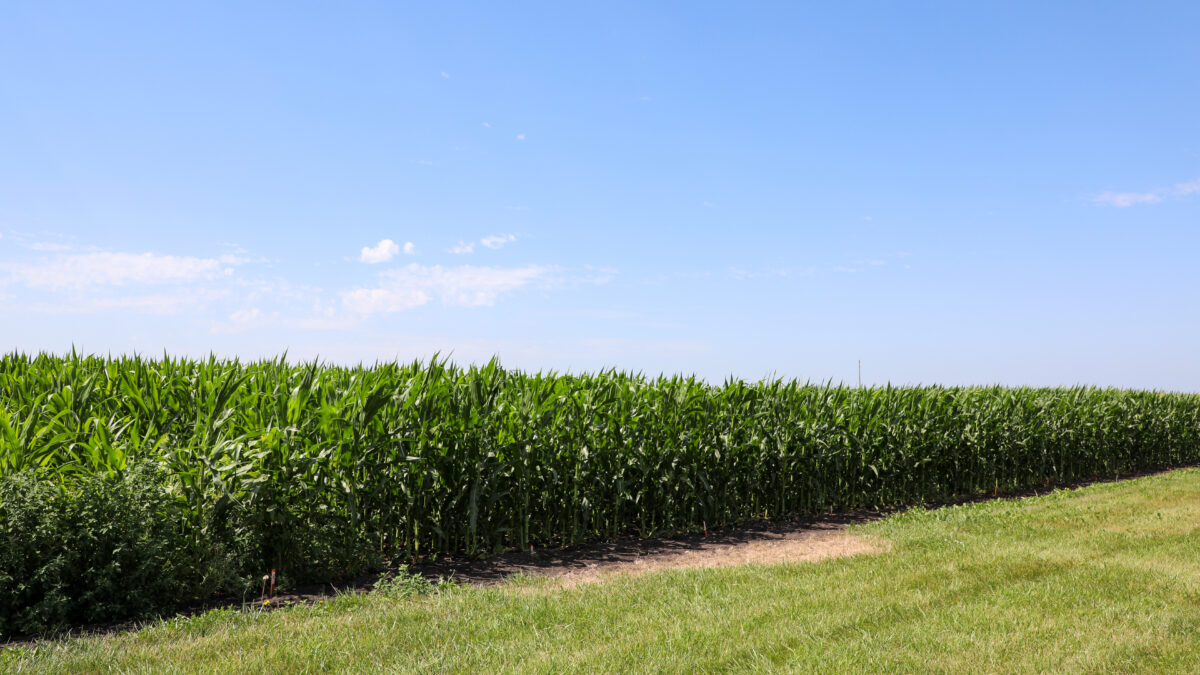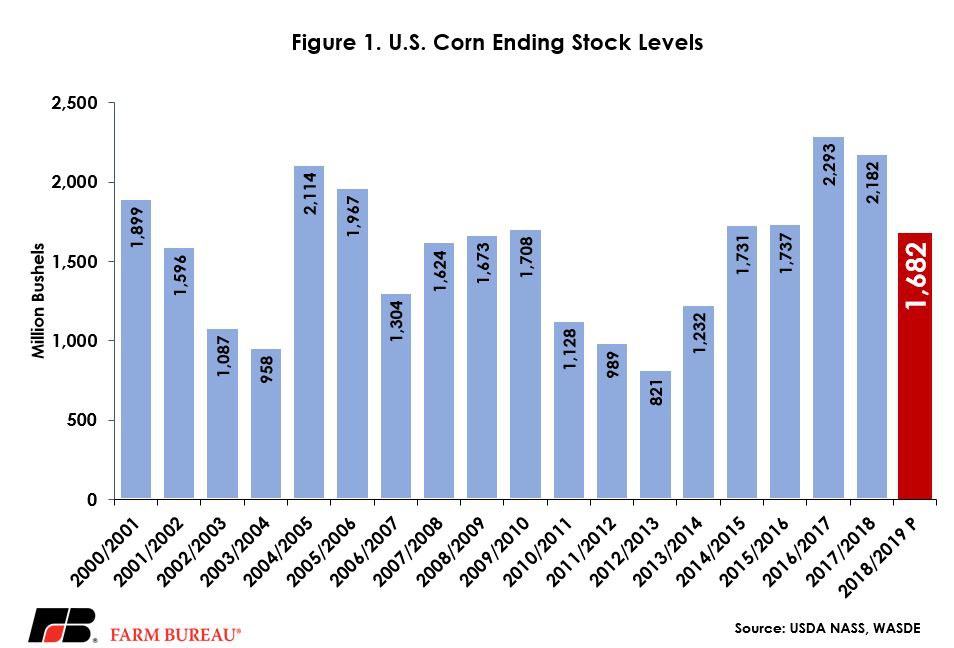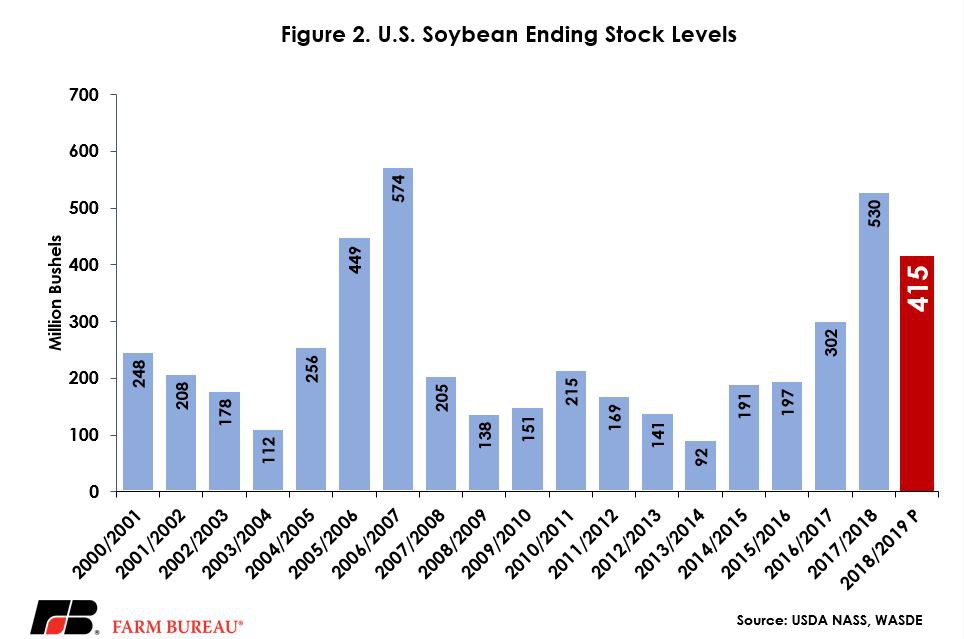USDA Projects Lower U.S. Stocks, Higher Prices for Corn and Soybeans
TOPICS
Soybeans
photo credit: Right Eye Digital, Used with Permission
John Newton, Ph.D.
Former AFBF Economist
Each year, USDA’s May World Agricultural Supply and Demand Estimates report kicks off the discussion about the new crop supply and demand balance sheets. The report is based on farmers’ planting intentions and weather-adjusted trend yield models. Given the uncertainty around planting in both the Northern and Southern hemispheres, the supply and demand projections are highly uncertain. As a result, the industry focuses most heavily on projections for ending stock levels.
For the 2018/19 marketing year – the crop currently being planted – USDA projects corn ending stocks at 1.682 billion bushels, in line with the trade estimates and down 23 percent from the 2017/18 ending stocks projection. If realized, the 2018/19 ending stocks level would be the lowest stock level in five years. Based on projections for lower ending stocks, U.S. 2018/19 marketing year average corn prices are projected to increase nearly 12 percent, or 40 cents per bushel, to $3.80.

For soybeans, USDA projects ending stocks in 2018/19 at 415 million bushels, well below the average trade guess of 535 million bushels and down 22 percent from the 2017/18 ending stocks projection. While lower year-over-year, if realized, 2018/19 soybean ending stocks would be the second-highest level on hand since the 2006/07 marketing year’s 574 million bushels. Given the projections for lower stock levels, the 2018/19 marketing year average price for soybeans was projected at $10 per bushel, up 65 cents, or 7 percent, from 2017/18.

One important surprise from the May WASDE was USDA’s projection for record-high U.S. soybean exports during 2018/19. The 2.29 billion bushel projection is up nearly 11 percent from the current marketing year. USDA’s partially bullish export projections come in the face of Chinese headwinds, including a potential 25 percent tariff on U.S.-produced soybeans. While U.S. exports are projected to grow, the U.S. market share of total soybean exports is projected at 39 percent – the lowest level since 2012/13.

Trending Topics
VIEW ALL